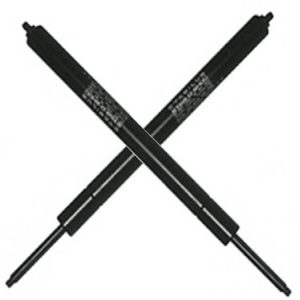
Gas springs have become a popular alternative to wire springs. Like all springs, they are designed to store mechanical energy. While wire springs are made of coiled-metal wire, however, gas springs feature a different design. Gas springs leverage a cylinder of compressed gas to store mechanical energy.
Some gas springs feature a dampening component in conjunction with a cylinder of gas. Known as gas spring dampers, they can restrict or control the motion of the objects with which they are used.
What Are Gas Spring Dampers?
Gas spring dampers are springs that contain a cylinder of gas and a damper. They are typically affixed with a piston. When exposed to a force, the piston will recede into the gas-filled cylinder. This process is what allows gas spring dampers to store mechanical energy while simultaneously controlling the motion of the objects with which they are used.
Most springs fall under one of two main categories: wire or gas. Wire springs are characterized by a coiled-metal design. Extension springs, for instance, are made of a single piece of coiled metal that becomes longer under a load. Compression springs are also made of a single piece of coiled metal, but they become shorter under a load. Both extension and compression springs are classified as wire springs because they are made of coiled-metal wire.
Why Choose Gas Spring Dampers
Being that there are other types of springs available, you might be wondering why you should choose gas spring dampers. Gas spring dampers don’t just store mechanical energy; they can restrict or control the motion of objects.
Most gas spring dampers contain dampening oil. Using this dampening oil, they are able to slow down the objects with which they are used. Only gas spring dampers offer speed control such as this. Traditional gas springs, as well as wire springs, don’t contain a damper, so they can’t apply a dampening force.
Gas spring dampers are also available in extension and compression spring designs. Neither of these designs features coiled metal. Rather, extension gas spring dampers are designed to become longer under a load, whereas compression gas spring dampers are designed to become shorter under a load.
Gas spring dampers are also reliable. They may seem complex, but they feature a relatively simple construction that’s highly reliable. You don’t have to worry about them wearing out prematurely. Even when used daily, gas spring dampers will last a long time.
